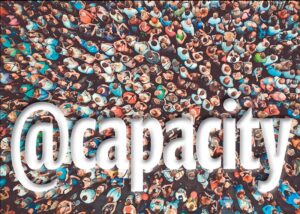Arts@Wheaton presents an interactive screening of Twilight. Audience members are welcome to yell out their favorite lines and come up with some hot takes for an informal talk back after the movie. We’ll provide the movie snacks, bring a friend and come enjoy some cheesy vampire romance.
This event is for the Wheaton Community only.
The ensemble, performing under Associate Professor Delvyn Case, present a concert highlighting the diversity of orchestral music and orchestral composers. Featuring Beethoven’s “Coriolan” Overture, Haydn’s Symphony no. 33, Samuel Coleridge-Taylor’s Noveletten, Jose Eizondo’s Danzas Latinoamericanos, and Charlotte Blake’s That Poker Rag
Suggested donation $5
Senior Visual Art majors’ will present bodies of work in a variety of mediums including: illustration, painting, photography, printmaking, and sculpture. This group exhibition is mounted under the supervision of Assistant Professor of Photography Leah Dyjak.
Gallery hours: Tuesday, Wednesday, Friday & Saturday 1-5 p.m.; Thursdays 1-8 p.m.
Please note: Wheaton currently requires guests to wear a mask indoors regardless of vaccination status.
Senior Visual Art majors’ will present bodies of work in a variety of mediums including: illustration, painting, photography, printmaking, and sculpture. This group exhibition is mounted under the supervision of Assistant Professor of Photography Leah Dyjak.
Gallery hours: Tuesday, Wednesday, Friday & Saturday 1-5 p.m.; Thursdays 1-8 p.m.
Please note: Wheaton currently requires guests to wear a mask indoors regardless of vaccination status.
Senior Visual Art majors’ will present bodies of work in a variety of mediums including: illustration, painting, photography, printmaking, and sculpture. This group exhibition is mounted under the supervision of Assistant Professor of Photography Leah Dyjak.
Gallery hours: Tuesday, Wednesday, Friday & Saturday 1-5 p.m.; Thursdays 1-8 p.m.
Please note: Wheaton currently requires guests to wear a mask indoors regardless of vaccination status.
Senior Visual Art majors’ will present bodies of work in a variety of mediums including: illustration, painting, photography, printmaking, and sculpture. This group exhibition is mounted under the supervision of Assistant Professor of Photography Leah Dyjak.
Gallery hours: Tuesday, Wednesday, Friday & Saturday 1-5 p.m.; Thursdays 1-8 p.m.
Please note: Wheaton currently requires guests to wear a mask indoors regardless of vaccination status.
Senior Visual Art majors’ will present bodies of work in a variety of mediums including: illustration, painting, photography, printmaking, and sculpture. This group exhibition is mounted under the supervision of Assistant Professor of Photography Leah Dyjak.
Gallery hours: Tuesday, Wednesday, Friday & Saturday 1-5 p.m.; Thursdays 1-8 p.m.
Please note: Wheaton currently requires guests to wear a mask indoors regardless of vaccination status.
Senior Visual Art majors’ will present bodies of work in a variety of mediums including: illustration, painting, photography, printmaking, and sculpture. This group exhibition is mounted under the supervision of Assistant Professor of Photography Leah Dyjak.
Gallery hours: Tuesday, Wednesday, Friday & Saturday 1-5 p.m.; Thursdays 1-8 p.m.
Please note: Wheaton currently requires guests to wear a mask indoors regardless of vaccination status.
Senior Visual Art majors’ will present bodies of work in a variety of mediums including: illustration, painting, photography, printmaking, and sculpture. This group exhibition is mounted under the supervision of Assistant Professor of Photography Leah Dyjak.
Gallery hours: Tuesday, Wednesday, Friday & Saturday 1-5 p.m.; Thursdays 1-8 p.m.
Please note: Wheaton currently requires guests to wear a mask indoors regardless of vaccination status.
Senior Visual Art majors’ will present bodies of work in a variety of mediums including: illustration, painting, photography, printmaking, and sculpture. This group exhibition is mounted under the supervision of Assistant Professor of Photography Leah Dyjak.
Gallery hours: Tuesday, Wednesday, Friday & Saturday 1-5 p.m.; Thursdays 1-8 p.m.
Please note: Wheaton currently requires guests to wear a mask indoors regardless of vaccination status.
